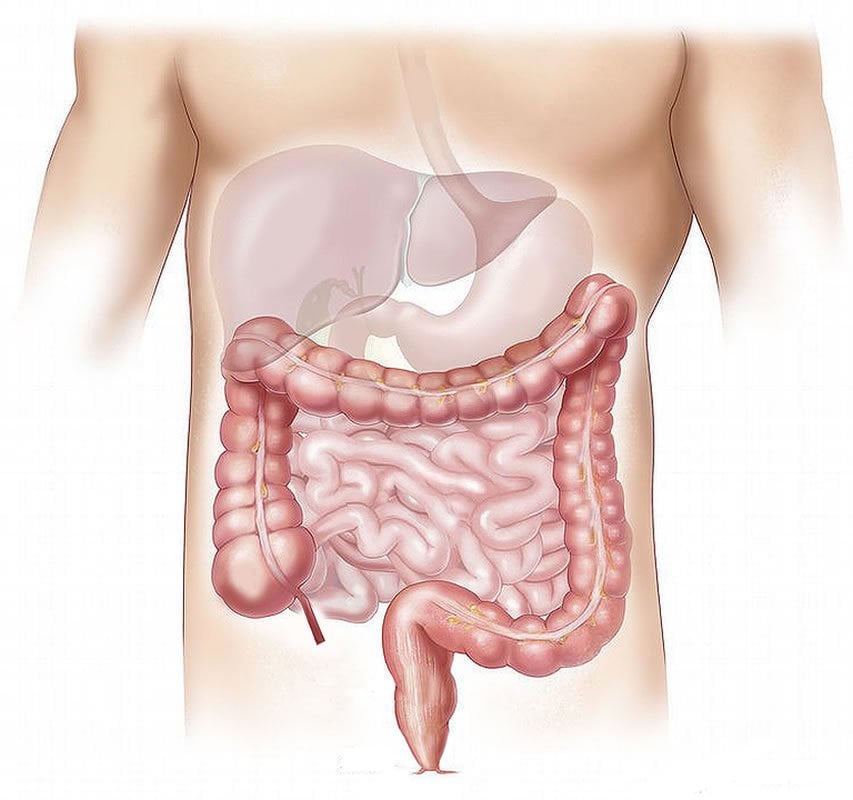Summary: Two months after injecting alpha-synuclein into the intestines of rats, researchers discovered the proteins had traveled to the brain via peripheral nerves. Four months later, the pathology was greater. Additionally, the protein had traveled to the heart. The study supports the hypothesis that Parkinson’s disease may begin in the intestinal system before migrating to the brain.
Source: Aarhus University
In 2003, a German neuropathologist proposed that Parkinson’s disease, which attacks the brain, actually might originate from the gut of the patients. Researchers from Aarhus have now delivered decisive supportive evidence after seeing the disease migrate from the gut to the brain and heart of laboratory rats. The scientific journal Acta Neuropathologica has just published the results, which have grabbed the attention of neuroscientific researchers and doctors internationally.
Harmful proteins on the move
Parkinson’s disease is characterized by slowly destroying the brain due to the accumulation of the protein alpha-synuclein and the subsequent damage to nerve cells. The disease leads to shaking, muscle stiffness, and characteristic slow movements of sufferers. In the new research project, the researchers used genetically modified laboratory rats which overexpress large amounts of the alpha-synuclein protein. These rats have an increased propensity to accumulate harmful varieties of alpha-synuclein protein and to develop symptoms similar to those seen in Parkinson’s patients. The researchers initiated the process by injecting alpha-synuclein into the small intestines of the rats. According to professor Per Borghammer and postdoc Nathalie Van Den Berge, the experiment was intended to demonstrate that the protein would subsequently spread in a predictable fashion to the brain.
“After two months, we saw that the alpha-synuclein had traveled to the brain via the peripheral nerves with the involvement of precisely those structures known to be affected in connection with Parkinson’s disease in humans. After four months, the magnitude of the pathology was even greater. It was actually pretty striking to see how quickly it happened,” says Per Borghammer, who is a professor at the Department of Clinical Medicine at Aarhus University.
Symptoms in the intestine twenty years before the diagnosis
Per Borghammer explains that patients with Parkinson’s disease often already have significant damage to their nervous system at the time of diagnosis, but that it is actually possible to detect pathological alpha-synuclein in the gut up to twenty years before diagnosis.
“With this new study, we’ve uncovered exactly how the disease is likely to spread from the intestines of people. We probably cannot develop effective medical treatments that halt the disease without knowing where it starts and how it spreads – so this is an important step in our research,” says Per Borghammer, adding:
“Parkinson’s is a complex disease that we’re still trying to understand. However, with this study and a similar study in the USA that has recently arrived at the same result using mice, the suspicion that the disease begins in the gut of some patients has gained considerable support.”

The research project at Aarhus University also showed that the harmful alpha-synuclein not only travel from the intestines to the brain but also to the heart.
“For many years, we have known that Parkinson patients have extensive damage to the nervous system of the heart and that the damage occurs early on. We’ve just never been able to understand why. The present study shows that the heart is damaged very fast, even though the pathology started in the intestine, and we can continue to build on this knowledge in our coming research,” says Per Borghammer.
Source:
Aarhus University
Media Contacts:
Per Borghammer – Aarhus University
Image Source:
The image is in the public domain.
Original Research: Open access
“Evidence for bidirectional and trans-synaptic parasympathetic and sympathetic propagation of alpha-synuclein in rats”. Nathalie Van Den Berge, Nelson Ferreira, Hjalte Gram, Trine Werenberg Mikkelsen, Aage Kristian Olsen Alstrup, Nicolas Casadei, Pai Tsung-Pin, Olaf Riess, Jens Randel Nyengaard, Gültekin Tamgüney, Poul Henning Jensen, Per Borghammer.
Acta Neuropathologica. doi:10.1007/s00401-019-02040-w
Abstract
Evidence for bidirectional and trans-synaptic parasympathetic and sympathetic propagation of alpha-synuclein in rats
The conversion of endogenous alpha-synuclein (asyn) to pathological asyn-enriched aggregates is a hallmark of Parkinson’s disease (PD). These inclusions can be detected in the central and enteric nervous system (ENS). Moreover, gastrointestinal symptoms can appear up to 20 years before the diagnosis of PD. The dual-hit hypothesis posits that pathological asyn aggregation starts in the ENS, and retrogradely spreads to the brain. In this study, we tested this hypothesis by directly injecting preformed asyn fibrils into the duodenum wall of wild-type rats and transgenic rats with excess levels of human asyn. We provide a meticulous characterization of the bacterial artificial chromosome (BAC) transgenic rat model with respect to initial propagation of pathological asyn along the parasympathetic and sympathetic pathways to the brainstem, by performing immunohistochemistry at early time points post-injection. Induced pathology was observed in all key structures along the sympathetic and parasympathetic pathways (ENS, autonomic ganglia, intermediolateral nucleus of the spinal cord (IML), heart, dorsal motor nucleus of the vagus, and locus coeruleus (LC)) and persisted for at least 4 months post-injection. In contrast, asyn propagation was not detected in wild-type rats, nor in vehicle-injected BAC rats. The presence of pathology in the IML, LC, and heart indicate trans-synaptic spread of the pathology. Additionally, the observed asyn inclusions in the stomach and heart may indicate secondary anterograde propagation after initial retrograde spreading. In summary, trans-synaptic propagation of asyn in the BAC rat model is fully compatible with the “body-first hypothesis” of PD etiopathogenesis. To our knowledge, this is the first animal model evidence of asyn propagation to the heart, and the first indication of bidirectional asyn propagation via the vagus nerve, i.e., duodenum-to-brainstem-to-stomach. The BAC rat model could be very valuable for detailed mechanistic studies of the dual-hit hypothesis, and for studies of disease modifying therapies targeting early pathology in the gastrointestinal tract.






